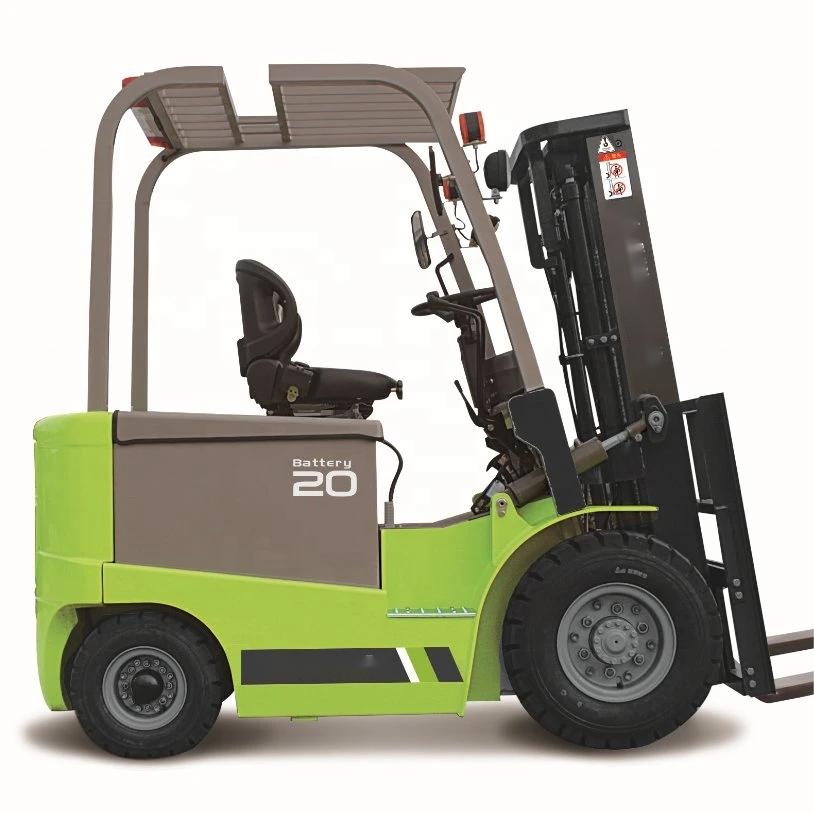In modern logistics and industrial production, electric forklifts are rapidly emerging as core equipment for material handling. Compared to traditional internal combustion forklifts, electric forklifts offer significant advantages, transforming industry operations with higher efficiency, environmental sustainability, and cost-effectiveness.

I. Environmental Leadership: Zero Emission Operations
One of the most significant advantages of electric forklifts is their environmental performance. Unlike internal combustion forklifts, which continuously emit pollutants such as carbon monoxide, nitrogen oxides, and particulate matter, electric forklifts operate with zero tailpipe emissions .
This makes them ideal for indoor environments with strict air quality requirements, such as food processing plants, pharmaceutical warehouses, and electronics manufacturing facilities, where they help maintain clean, safe working spaces .
II. Cost-Effective Operations: Lower Long-Term Expenses
While electric forklifts may have slightly higher upfront costs, their long-term operational economics are compelling.
- Energy Savings: Electric forklifts reduce energy costs by 30%-50% compared to gasoline/diesel models, thanks to lower electricity prices and higher energy efficiency .
- Reduced Maintenance: With fewer moving parts and simpler structures, electric forklifts require less frequent maintenance. Annual maintenance costs are 20%-30% lower than those of internal combustion forklifts . For example, lithium-ion batteries in electric forklifts eliminate the need for oil changes and other fuel-related maintenance .
III. Superior Performance: Precision and Efficiency
Electric forklifts excel in operational performance:
- Advanced Control Systems: Electric forklifts feature precise control systems, enabling operators to handle goods accurately and efficiently, reducing loading/unloading time .
- High Torque Motors: These motors provide rapid acceleration and stable lifting, meeting the demands of dense warehouse aisles and large logistics centers .
- Low Noise: Operating noise levels are typically 10-15 decibels lower than internal combustion forklifts, making them suitable for noise-sensitive areas like hospitals and schools .
IV. Versatile Applications: Adapting to Diverse Industries
Electric forklifts are deployed across various sectors:
- Logistics and Warehousing: They enhance warehouse efficiency by navigating narrow aisles and optimizing space utilization, crucial for order fulfillment during peak seasons like "Double Eleven" .
- Manufacturing: In cleanroom environments (e.g., electronics, automotive), their zero emissions and low noise ensure uninterrupted production .
- Cold Chain Logistics: Electric forklifts maintain performance in low-temperature environments, enabling rapid handling of perishable goods .
- Ports and Terminals: In eco-friendly port areas, they reduce air pollution while meeting heavy-load handling demands .
V. Future Prospects: Innovation and Sustainability
Technological advancements continue to enhance electric forklifts’ capabilities:
- Intelligent Features: Integration of AI and IoT enables autonomous operation, real-time monitoring, and predictive maintenance .
- Renewable Energy Integration: Charging from solar power systems (as demonstrated in Xiamen’s logistics park) further reduces carbon footprints .
In conclusion, electric forklifts represent a strategic choice for businesses aiming to reduce costs, enhance sustainability, and improve productivity. As technology evolves, their role in driving green logistics and industrial transformation will only expand .





